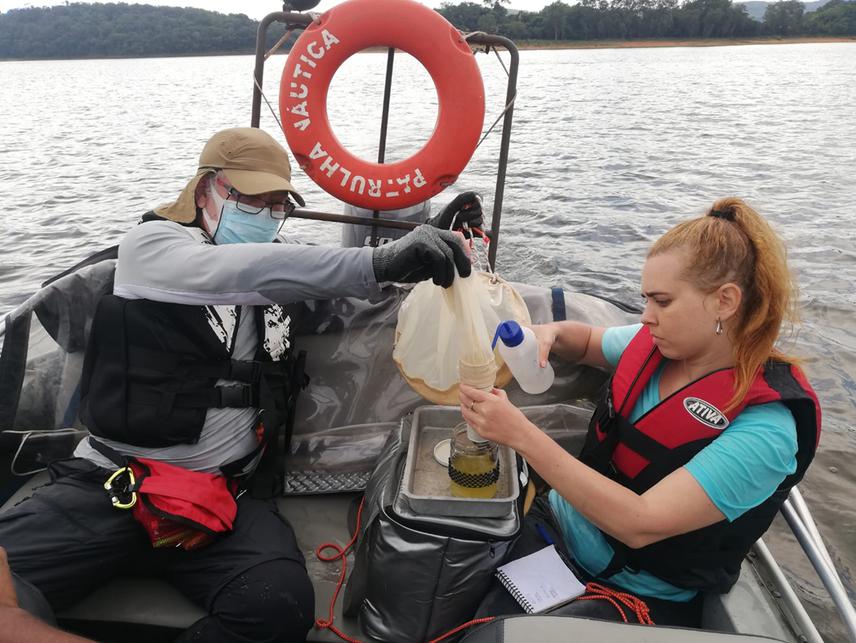Bárbara Rani Borges
This project aims to investigated microplastic pollution levels in surface waters from the Itupararanga Reservoir, an Environmental protection area located in São Paulo state, Brazil. Water samples will be collected and analysed in order to check the presence of microplastics. Then, the fragments will be identified and characterized according to size, colour and type.
The data will serve to support debates about stricter environmental laws in the region. Finally, this project also aims to reach the community, showing the importance of reducing the use of plastics in everyday life and encouraging recycling.

The constant entry of microplastics in several environmental matrices, has been of great concern to the scientific community and to society in general, mainly due to the mysteries involved in the mechanisms of action of this contaminant. Freshwater ecosystems are especially susceptible to environmental quality, and the lack of data on the impacts caused by plastic fragments exacerbates the vulnerability of this environment.
Considering this scenario and recent data, that demonstrate that the increasing concentration of polymeric fragments in the aquatic environment can cause serious consequences for biota, this project aims to investigated microplastic pollution levels in surface waters from the Itupararanga Reservoir, an Environmental protection area located in São Paulo state, Brazil.
Despite the fact that the Itupararanga reservoir is located within an APA, the areas near the reservoir have been compromised over time with illegal occupation and land use for agricultural activities and the discharge of domestic and industrial sewage from the cities of Ibiúna, Vargem Grande Paulista and the Caucaia do Alto District in Cotia. These activities have been damaging the quality of the spring and accelerating the process of degradation of the surroundings, which affects the water quality of an area that should be protected.
As there are no technologies for removing microplastics from contaminated environments, this type of pollution should be avoided as soon as possible. Especially when we consider that the Itupararanga APA is inserted in two Brazilian biomes, the Cerrado and the Atlantic Forest, both considered global hotspots, priority areas for biodiversity conservation. At the moment, the Cerrado is more threatened than it has ever been. Brazil has already lost 50% of the Cerrado and many species of animals and flora only exist there.
Water samples will be collected and analysed in order to check the presence of microplastics. Then, the fragments will be identified and characterized according to size, color and type.
This study is part of the student's doctoral research, which will contribute to achieve a better understanding of microplastics impacts, with more complete results. In addition to the study in Itupararanga, toxicological tests with microplastics and copper will be carried out in laboratory.